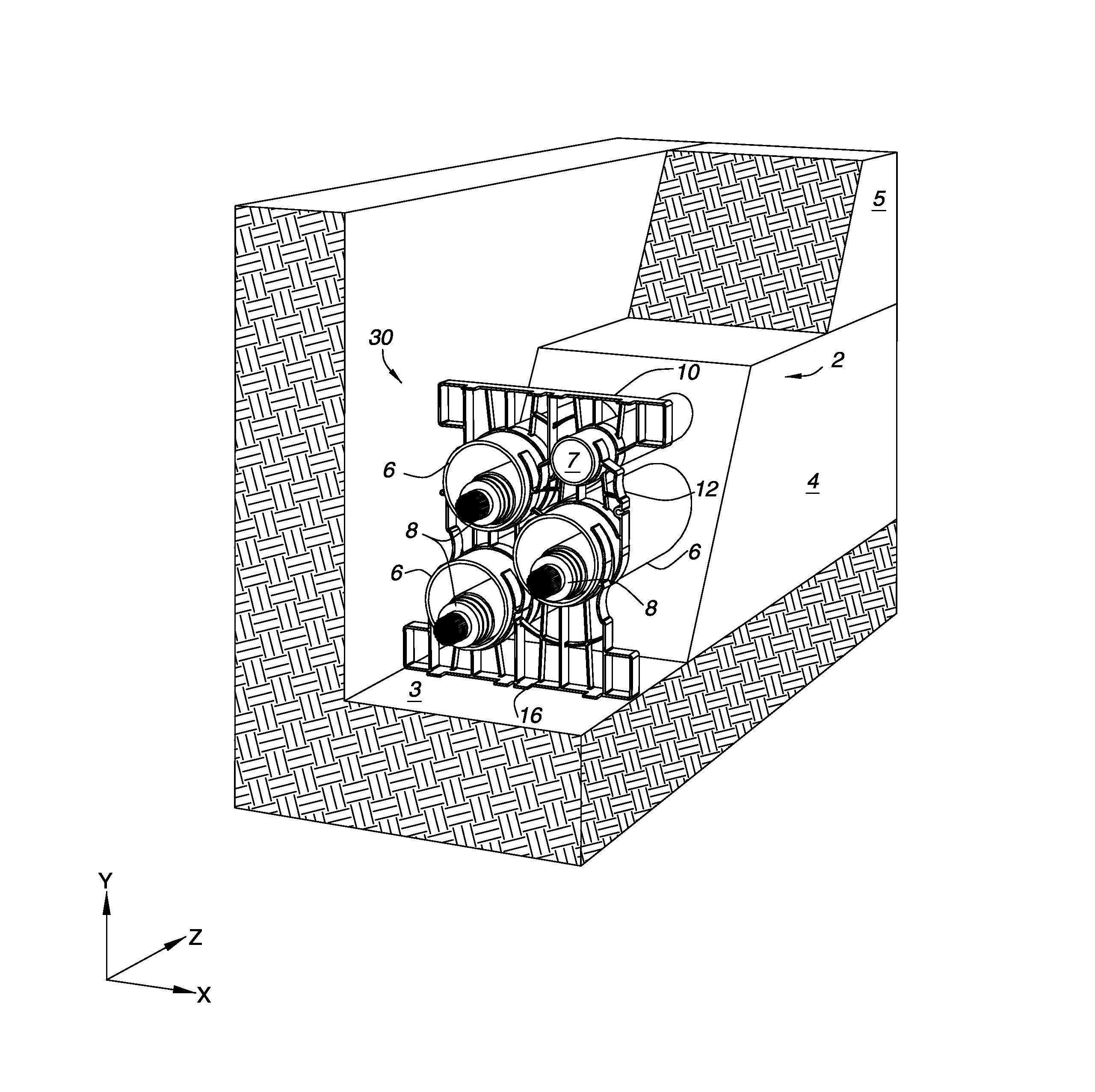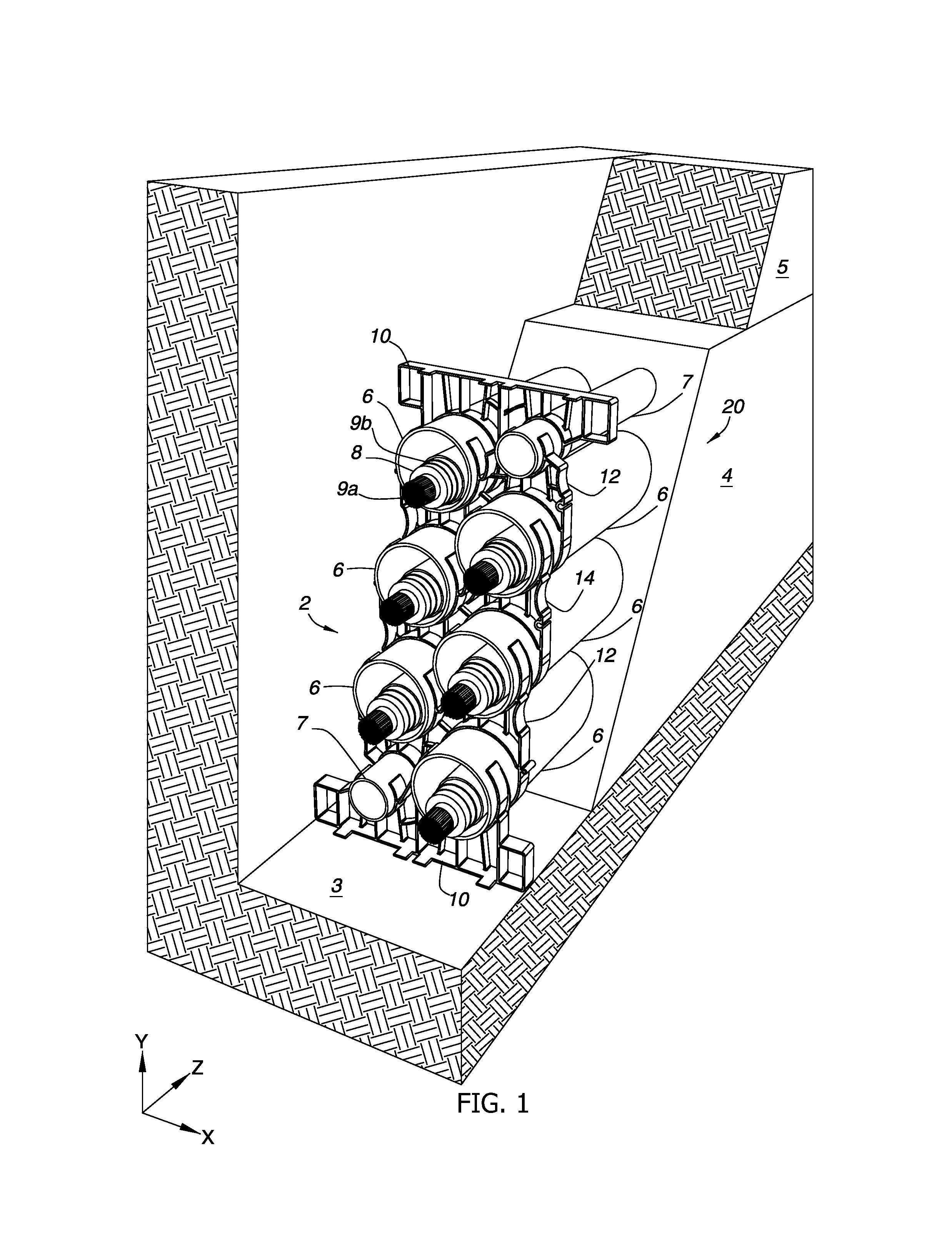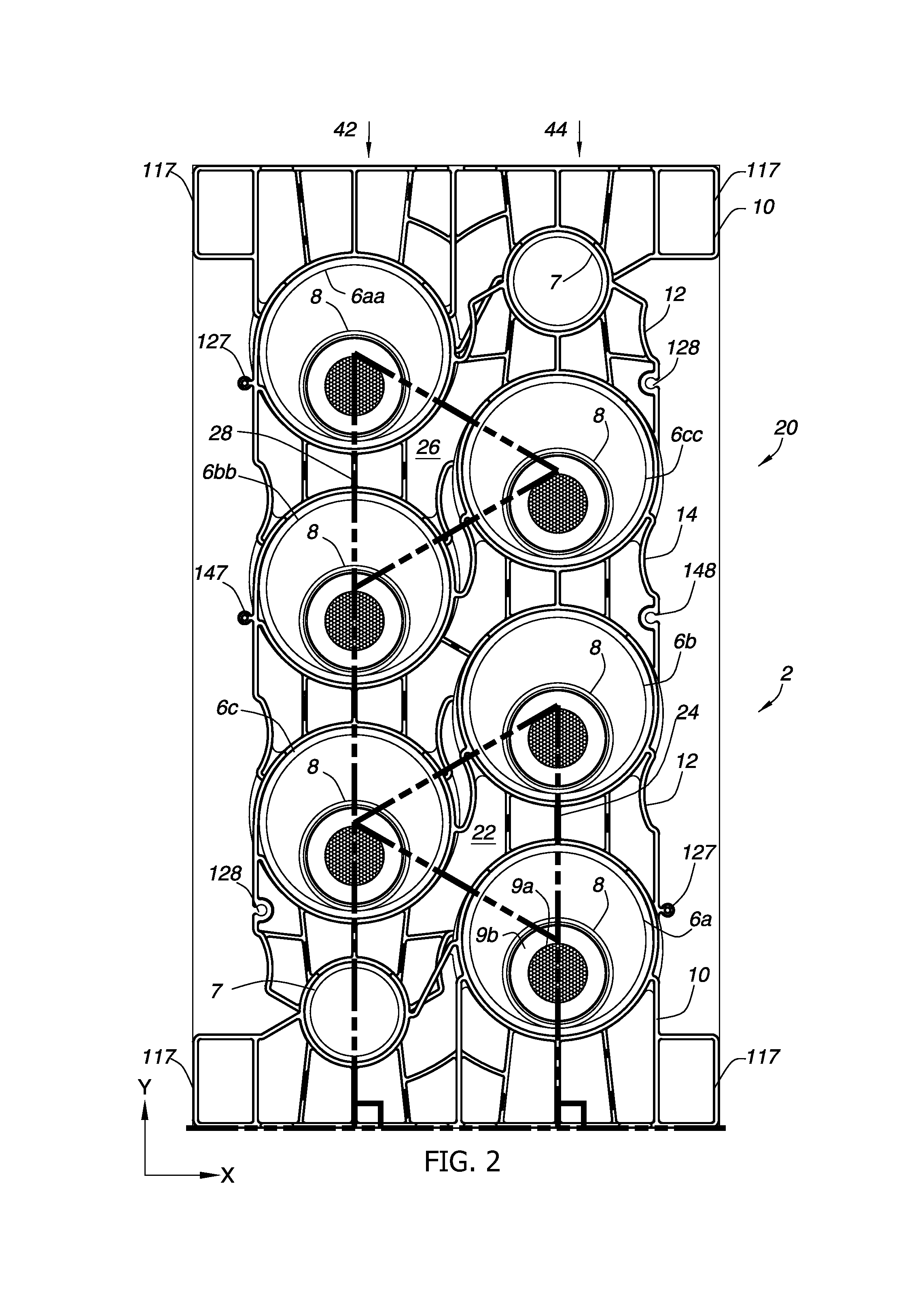Low EMF compact duct spacer
a compact, duct spacer technology, applied in the direction of cable installation in underground tubes, machine supports, cables, etc., can solve the problems of deformation or crushing of conduits, heavy loads on the duct bank, and no studies or evidence available to date have conclusively proven that exposure to emf above 3 to 4 mg is detrimental to human health
- Summary
- Abstract
- Description
- Claims
- Application Information
AI Technical Summary
Benefits of technology
Problems solved by technology
Method used
Image
Examples
first embodiment
[0060]A first embodiment duct bank with the spacers described herein is presented in the perspective view of FIG. 1. The installation includes a duct bank 2 which has been placed in a trench 3 and then encased in protective concrete 4. After the concrete cures, the installation is backfilled with the overburden or earth 5 that was previously removed. Duct bank 2 includes a plurality of large conduits 6 and small conduits 7. The conduits are stacked atop each other as shown using duct spacers 10, 12, 14, 12 and 10. The duct spacers are staggered horizontally to avoid creation of a vertical shear plane in the concrete. The figure depicts spacers suitable for a dual 3-phase arrangement 20 of power cables to be placed into the large conduits shown. The smaller conduits are typically not used for power cable, but may instead be used for fiber optic communications cables, control cables and thermocouples or other temperature elements for monitoring duct bank temperatures. The smaller cond...
embodiment 50
[0078]FIGS. 9-10, for example, depict the same arrangement 20 of dual 3-phase transmission lines discussed above, with conduits and cables spaced in an equilateral triangle 22, 26 arrangement with bases 24, 28 roughly perpendicular to the bottom of trench 3 or the ground. In this embodiment 50, a single spacer body 50a is supported by a spacer base 50b on the bottom of a trench 3. In one embodiment, spacer body 50a is fabricated from 0.5 inch thick HDPE sheet stock using a CNC router. Alternatively, spacer 50a could be injection molded for a lower cost if volume warrants. Spacer body 50a is joined to spacer base 50b with a slit 50c in the base. When the installation is complete, the duct bank 2 is encased in concrete 4 and then covered with overburden 5, such as with earth. Single spacer body 50a may be any suitable width, such as ¼″ to ½″, although embodiments may use widths that are greater or narrower than these.
[0079]Spacer body 50a may be a sheet of plastic or composite materia...
PUM
| Property | Measurement | Unit |
|---|---|---|
| voltage | aaaaa | aaaaa |
| voltage | aaaaa | aaaaa |
| voltage | aaaaa | aaaaa |
Abstract
Description
Claims
Application Information
 Login to View More
Login to View More - R&D
- Intellectual Property
- Life Sciences
- Materials
- Tech Scout
- Unparalleled Data Quality
- Higher Quality Content
- 60% Fewer Hallucinations
Browse by: Latest US Patents, China's latest patents, Technical Efficacy Thesaurus, Application Domain, Technology Topic, Popular Technical Reports.
© 2025 PatSnap. All rights reserved.Legal|Privacy policy|Modern Slavery Act Transparency Statement|Sitemap|About US| Contact US: help@patsnap.com



